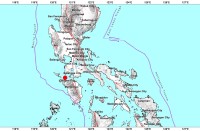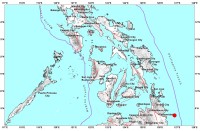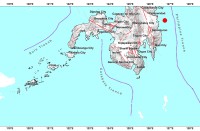QUEZON CITY, June 7 — The Department of Agriculture is urging farmers to employ the water management technologies developed by PhilRice to effectively and efficiently use water and maximize rice yields now that the country experiences El Niño,
Engr. Evangeline Sibayan, Supervising Science Research Specialist at PhilRice’s Rice Engineering and Mechanization Division, in a DA statement said that the alternate wet and drying (AWD) method is an effective guide for farmers on when to irrigate the rice field.
“Farmers need not be alarmed even if they see cracks on their fields because AWD method will ensure there’s enough water at the roots of the rice plant,” Sibayan said.
The AWD method or controlled irrigation is distinct from the farmers’ usual practice of continuous flooding.
Under this technology, the farmers are taught to monitor the depth of the water table in the field using an observation well, a perforated water tube made of either PVC pipe or bamboo, buried 15 centimeters into the ground, she explained.
AWD technology can reduce the number of irrigations significantly compared with the farmers’ practice, thereby lowering irrigation water consumption by 25% and, in some cases, reducing fuel consumption for pumping water by 30 liters per hectare.
While saving water, AWD ensures that there is no yield penalty for farmers using the technology, she added.
Engr. Sibayan added that AWD not only conserves water but also mitigates greenhouse gas emissions. The global climate influence of gases, particularly methane, and resulting reduction in methane emissions may provide the means for rice to adapt to water scarcity and at the same time mitigate greenhouse gas emissions by adjusted water management practice through AWD.
Another system—the aerobic rice culture—is a production system in which especially developed “aerobic rice” varieties are grown in well-drained, non-puddled, and non-saturated soils.
Aerobic cultivation entails the growing of rice in aerobic soil, with the use of external inputs such as supplementary irrigation and fertilizers, and aiming for high yields.
Growing rice aerobically saves water by eliminating continuous seepage and percolation, reducing evaporation and eliminating wetland preparation, she explained.
Aerobic rice can be rain-fed or irrigated. Irrigation can be applied through flash-flooding, furrow irrigation (or raised beds), or sprinklers.
Engr. Sibayan said that unlike flooded rice, irrigation—when applied—is not used to flood the soil but to just bring the soil water content in the root zone up to field capacity.
Around 10% of the available water can be saved through farmers’ collective efforts in using the technology, she said.
For the past year, only about 190 out of about 6,000 IAs in the country have benefited from the techno demonstrations.(DA-AFID)







